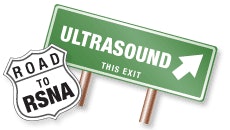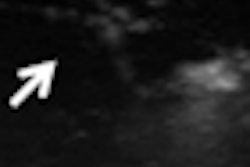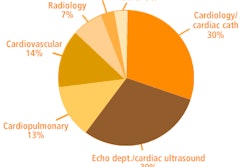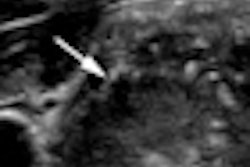Ultrasound has a reputation as a portable, relatively cheap technology that frequently serves as a gateway to other, more powerful -- and expensive -- modalities. At this year's RSNA show, look for presentations that emphasize ultrasound's emerging potential in more advanced imaging, even in areas such as personalized medicine -- this year's RSNA theme.

Other sessions indicate that elastography will be a major highlight this year as researchers plumb the technology's potential for detecting signs of malignancy through measurements of tissue stiffness. The technique is showing potential in particular for breast and thyroid lesion characterization.
Also look for scientific sessions on ultrasound computer-aided detection (CAD) and ultrasound contrast (though ultrasound contrast for noncardiac use remains stuck in regulatory limbo in the U.S.).
Among the key refresher courses at RSNA 2010, make sure you don't miss the following:
- Mistakes to avoid in obstetric ultrasound: Sunday, November 28, 2:00 p.m.-3:30 p.m., RC110, Room N227
- The applications and pitfalls of ultrasound in oncology: Monday, November 29, 8:30 a.m.-10:00 a.m., RC218, Room S405AB
- A course on breast ultrasound, including automated screening, emerging trends in elasticity imaging, and whole-breast ultrasound: Wednesday, December 1, 8:30 a.m.-10:00 a.m., RC521, Room E451B
- The challenges to ultrasound presented by the obesity epidemic: Friday, December 3, 8:30 a.m.-10:00 a.m., RC810, Room S404AB
If you're perusing the poster presentations at Lakeside Center, keep an eye out for the following:
- Software for coregistering previously acquired MR images on real-time ultrasound scans for breast imaging (LL-BRE2001)
- A method for generating structured reports in breast ultrasound using the BI-RADS US lexicon (LL-INE2500)
- Physical principles and clinical applications of tissue elasticity imaging (LL-MSE1288)
- Clinical applications for 3D ultrasound (LL-MSE2663)
- How to identify bowel pathology in an otherwise "negative" abdominal ultrasound scan (LL-GIE2287)
To view the complete RSNA scientific program and abstracts directly, just click here. See you in Chicago!



















